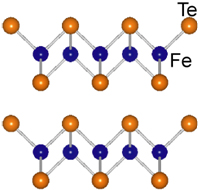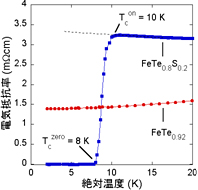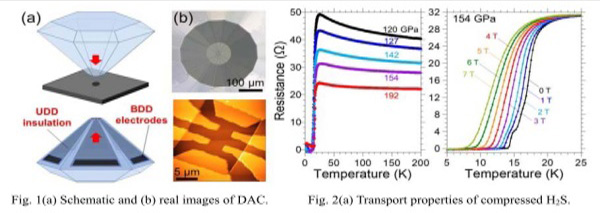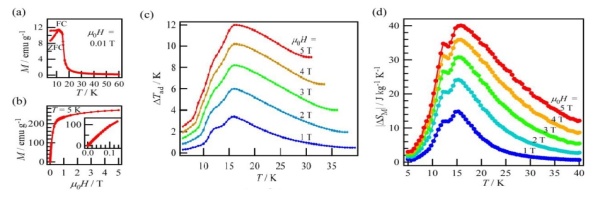 Frontier Superconducting Materials Group
Frontier Superconducting Materials Group
Since superconductors can transport energy without loss, it is expected that superconductivity is a key solution technology to energy problems. We are focusing on the physical properties of Fe-based superconductors, diamond superconductors, high-Tc superconductors and carbon nanotubes. We have developed a superconducting wire using newly discovered superconducting materials. Development of novel devices, including optical and field effect devices, using superconductors and nano-technologies are targets.
Specialized Research Field
Iron-based superconductor and novel superconductor

Fig 1. Crystal structure of FeTe new superconductor.

Fig.2. Resistivity properties of Fe(Te,S) superconductor.
Development of electrode patterned diamond anvil for ultrahigh pressure with voltage electrical resistance measurement device and search for new superconductors using material informatics

Fig. 3. Development of electrode patterned diamond anvil for ultrahigh pressure with voltage electrical resistance measurement device and search for new superconductors using material informatics.
Under ultrahigh pressure, very interesting physical phenomena such as room temperature superconductivity of hydrogen have been predicted. On the other hand, in order to measure physical properties under such an extreme high-pressure environment, there are various difficulties such as the problem of electrode strength. Therefore, we processed the boron-doped diamond, which is the hardest electrode in the world, into an electrode by the microfabrication technology, and developed the world's first diamond electrode-introduced pressure device.
(2) Successful generation of ultra high pressure of 100 GPa or higher
As a result of a pressure experiment using the developed diamond electrode-introduced pressure device, we succeeded in generating an ultrahigh pressure of 100 GPa. It is expected to be applied to the observation of various physical phenomena that occur in the multi-megabar region.
(3) Discovery of new superconductors by machine learning
The discovery of superconductors often depends on the experience, intuition, and contingency of researchers, and there have been discussions on serendipity in it. The Takano Group first picks up the candidates of new superconducting substances that are expected to develop superconductivity by applying pressure by machine learning and confirms whether they become superconducting. So far, we have discovered SnBi2Se4, PbBi2Te4, etc., and the candidate substances show almost 100% superconductivity.
Development of high-performance magnetic refrigeration materials for hydrogen liquefaction

Fig. 4. Basic physical properties such as magnetic transitions and entropy changes of HoB2 material with the highest performance in the world.
In 2017, the government established the “Basic Hydrogen Strategy”, and various research and development are being carried out through industry-academia-government collaboration toward the realization of a hydrogen-using society in 2030. Japan-Australia jointly aims to improve Japan's energy situation and reduce CO2 warming gas by hydrogen from brown coal in Latrobe Valley, Victoria. Hydrogen is liquefied locally, then transported to Japan, and is used hydrogen power generation.
(2) Development of high-performance magnetic refrigeration materials
Using a learning model, we searched for a candidate substance of magnetic refrigeration materials near the hydrogen liquefaction temperature. By actually measuring and evaluating the magnetic transition temperature, entropy change, and magnetic refrigeration performance evaluation value (RCP) of the candidate substances, we found the HoB2 material with the world's highest performance compared with the substances reported so far. .. Currently, we are conducting research on magnetic structure, basic physical properties, control of magnetic transition temperature by doping, and implementation for actual magnetic refrigeration AMR equipment.





